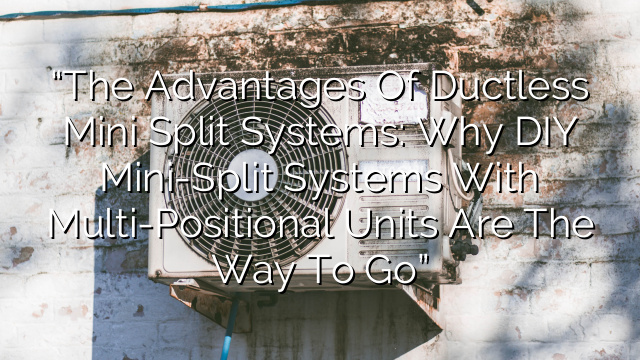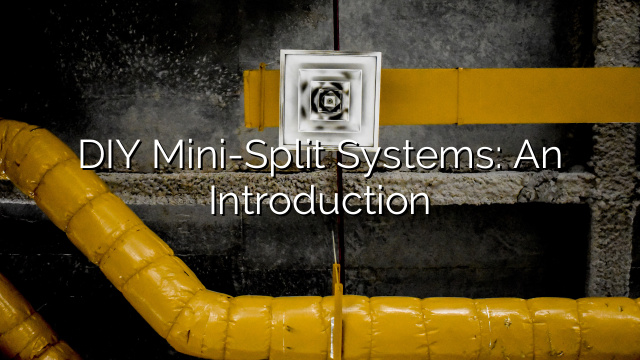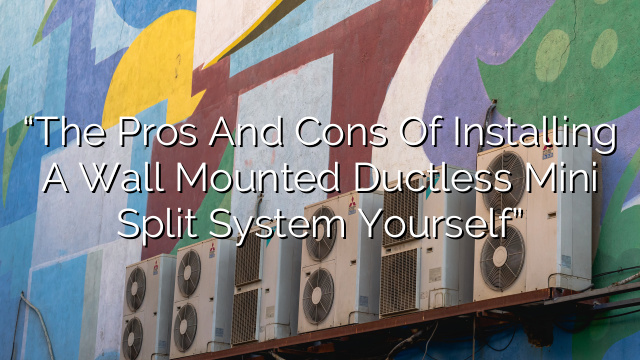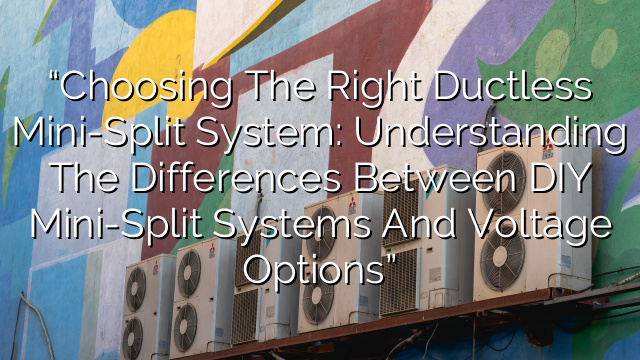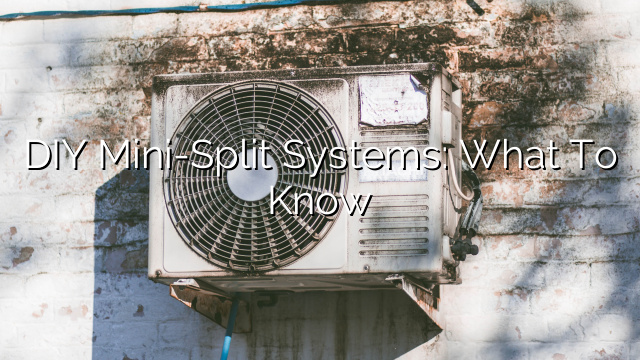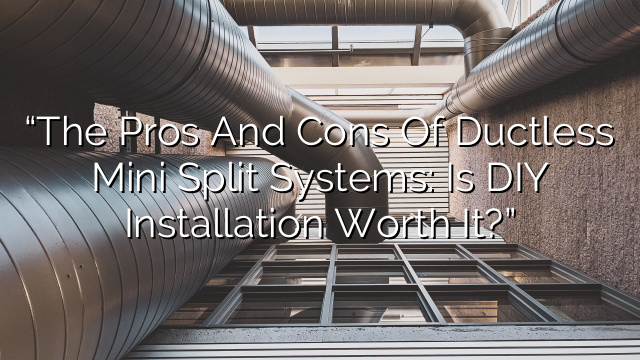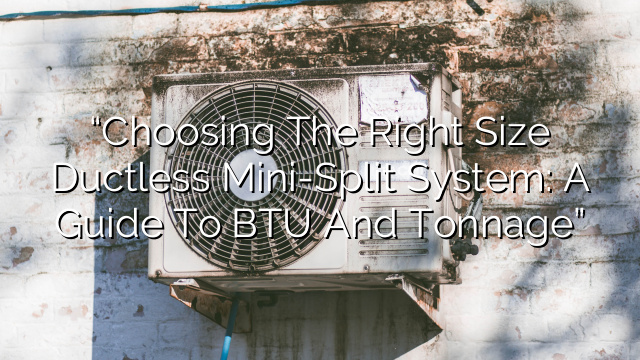Introduction
Mini-split systems are an excellent choice for cooling or heating individual rooms or specific areas of your home. They offer the convenience of easy installation and are energy-efficient. However, just like any other appliance, mini-split systems require regular maintenance to ensure optimal performance and longevity. In this blog post, we will share some DIY tips for maintaining your mini-split system.
Cleaning the Filters
Cleaning the filters of your mini-split system is essential for efficient operation and good air quality. Use the following steps to clean the filters:
- Turn off the system and unplug it from the power source.
- Locate the air intake grilles on the indoor unit.
- Remove the grilles by gently pulling on them.
- Take out the filters from the grilles.
- Use a vacuum cleaner or a brush to remove dust and debris from the filters.
- If the filters are washable, rinse them with warm water and mild detergent. Let them air dry completely before reinstalling.
- Reinstall the filters and the grilles in their original positions.
Cleaning the Outdoor Unit
The outdoor unit of your mini-split system is exposed to dust, dirt, and debris. Regular cleaning is necessary to maintain its efficiency. Here’s how you can clean the outdoor unit:
- Turn off the system and unplug it from the power source.
- Remove any debris or vegetation around the unit.
- Use a brush or soft cloth to gently clean the exterior surfaces of the unit.
- If there are any visible dust or dirt buildup on the fins, use a vacuum cleaner with a soft brush attachment to remove them.
- Check the drainage hole and make sure it is not clogged. If it is, unclog it using a small wire or pipe cleaner.
Checking the Condensate Drain Line
The condensate drain line is responsible for draining the excess moisture produced by your mini-split system. If the drain line becomes clogged, it can lead to water leakage and damage. Follow these steps to check the condensate drain line:
- Turn off the system and unplug it from the power source.
- Locate the condensate drain line, which is typically a small tube connected to the indoor unit.
- Gently detach the drain line from the indoor unit.
- Inspect the drain line for any signs of blockage or buildup.
- If there is a clog, use a small wire or pipe cleaner to remove it.
- Reattach the drain line to the indoor unit.
Checking the Refrigerant Levels
Proper refrigerant levels are crucial for the efficient operation of your mini-split system. If the refrigerant levels are low, it can lead to decreased cooling or heating performance. It is recommended to check the refrigerant levels annually, preferably before the start of the cooling or heating season. Here’s how you can do it:
- Turn off the system and unplug it from the power source.
- Locate the service port valves on the refrigerant lines.
- Connect a pressure gauge manifold to the service port valves.
- Check the pressure readings on the gauge manifold and compare them to the manufacturer’s specifications.
- If the pressure readings are outside the recommended range, it may indicate a refrigerant leak. In such cases, it is best to contact a professional HVAC technician for further diagnosis and repair.
- If the pressure readings are within the recommended range, no further action is required.
Frequently Asked Questions
1. Can I clean the mini-split system while it is running?
No, it is important to turn off the system and unplug it from the power source before performing any cleaning or maintenance tasks.
2. How often should I clean the filters?
The frequency of filter cleaning depends on the level of dust and debris in your environment. In general, it is recommended to clean the filters every 2-4 weeks during heavy usage periods, and every 2-3 months during lighter usage periods.
3. Can I use a pressure washer to clean the outdoor unit?
No, using a pressure washer can damage the delicate fins of the outdoor unit. It is best to use a brush or soft cloth for cleaning.
4. What should I do if I notice water leakage from the indoor unit?
Water leakage can be caused by a clogged condensate drain line or improper installation. Check the condensate drain line for any clogs and unclog it if necessary. If the issue persists, it is recommended to contact a professional HVAC technician for assistance.
5. Can I recharge the refrigerant myself?
Recharging the refrigerant requires specialized equipment and knowledge. It is best to leave this task to a professional HVAC technician to ensure it is done correctly and safely.
6. How can I improve the energy efficiency of my mini-split system?
To improve the energy efficiency of your mini-split system, you can:
- Keep doors and windows closed while the system is running.
- Ensure proper insulation in your home.
- Use curtains or blinds to block direct sunlight.
- Set the thermostat to the desired temperature and avoid extreme temperature settings.
7. Is it necessary to hire a professional for mini-split system maintenance?
While some maintenance tasks can be performed by homeowners, it is recommended to have your mini-split system professionally maintained at least once a year. Professional technicians have the expertise and specialized tools to perform comprehensive maintenance and identify any potential issues before they become major problems.
8. How long does a mini-split system last?
A well-maintained mini-split system can last up to 20 years or more. Regular maintenance and timely repairs can significantly extend the lifespan of the system.
9. What should I do if my mini-split system is not cooling or heating properly?
If your mini-split system is not cooling or heating properly, check the filters for blockages and clean them if necessary. Also, ensure that the thermostat settings are correct. If the issue persists, it is advisable to contact a professional HVAC technician for further diagnosis and repair.
By following these DIY tips for mini-split systems, you can prolong the lifespan of your system and ensure optimal performance. Regular maintenance not only improves energy efficiency but also enhances the overall air quality in your home. If you have any specific concerns or complex issues, do not hesitate to seek professional assistance from an HVAC technician.


